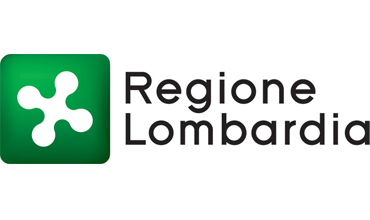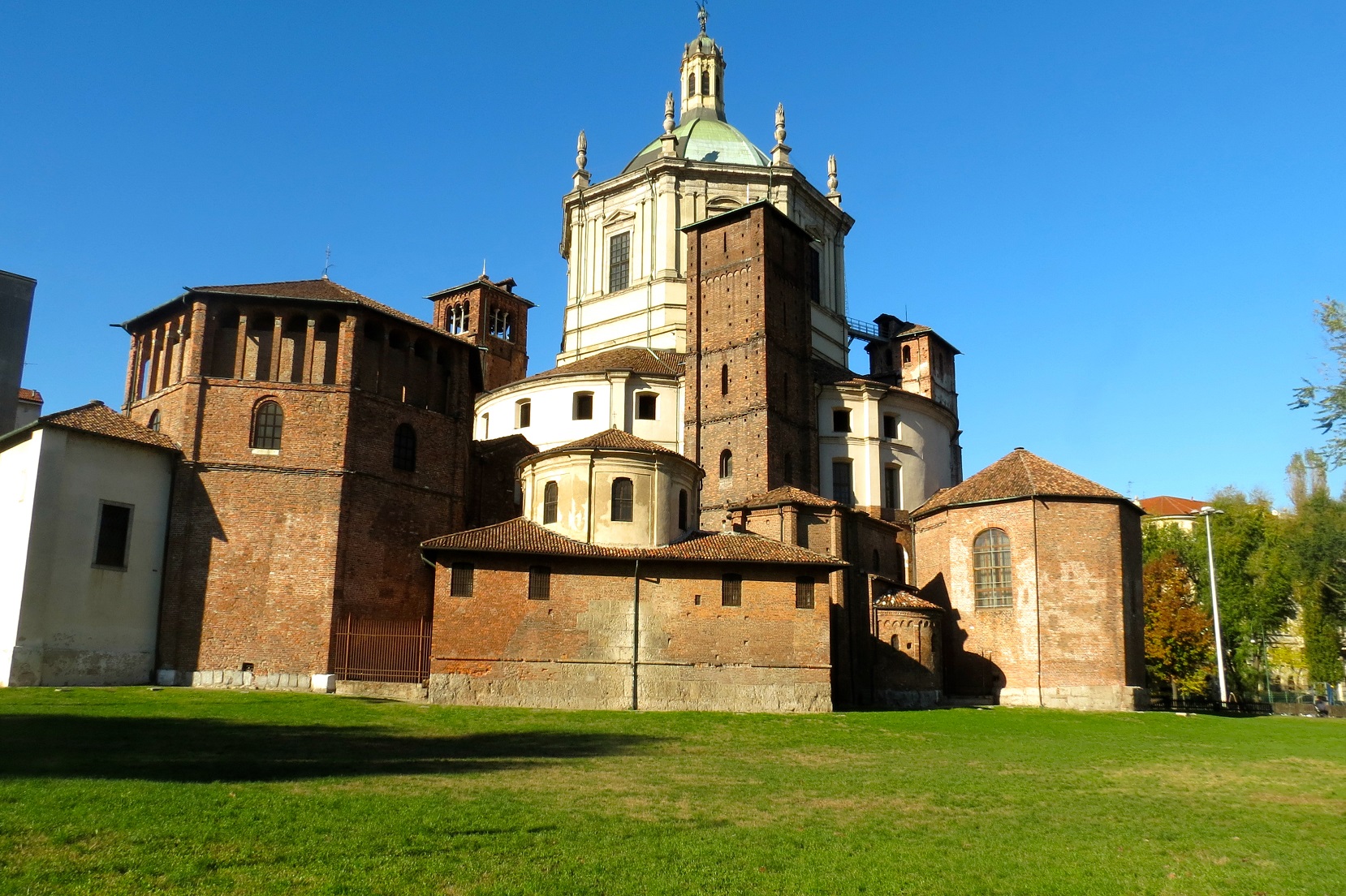The "Cammin breve" literally “the short path of the seven churches” allows you to immerse yourself in an ultra-millennial history and it takes place in the center of Milan: from Piazza Duomo to the Basilica of Sant'Eustorgio, where the first baptismal font of Milan is, restored by Cardinal Carlo Borromeo in 1623. It was there, according to an ancient tradition, that the first Christians of Milan were baptized by San Barnaba in the area where the church was built. For this reason, in memory of the first evangelization of the town, every archbishop of Milan makes his first entry into the city from S. Eustorgio with a unique exchange of gifts: the archbishop delivers his clothes in white linen and, in return, he receives a small urn containing the earth collected in the early Christian cemetery located in the foundations of the Basilica. From here, the "Cammin breve" takes you to the Cathedral.
Stage 1 - Santa Maria presso San Satiro
We start our walk from the Cathedral and, leaving it behind us, we walk along via Torino, until we reach the Church of S. Maria near S. Satiro (19, via Torino) which was built over an ancient church of the end of the ninth century. In the church, there was an image of the "Virgin with the child" that soon became a pilgrimage destination. For this reason, at the end of the fifteenth century, a new church was built in her honour. The work was entrusted to Bramante, who succeeded in a difficult task: transform a limit into a work of art. In fact, when they decided to build the church, the diocese did not have all the necessary permits and the available space for the apse was smaller than the space planned for the project. There were about 10 meters missing. But Bramante brought all the measurements perfectly in scale and obtained a masterpiece of perspective illusion. Entering the church, we have the impression that behind the altar there is a typical apse with columns and decorations. You need to get near the altar to realize that it is only an illusion: it's a brick and wood structure, terracotta and painted stucco placed in a space of only 97 cm, instead of the 9.7 m originally planned.
The Italian Touring Club volunteers welcome visitors for a short guided tour from Tuesday to Saturday from 9.30 to 17.30 and on Sundays from 2.00 to 5.30 pm. Guided tours for groups need to be booked.
For information and reservations, please contact the following e-mail address: sansatiro@chiesadimilano.it
At this link you can find detailed information on accessibility.
Stage 2 - Tempio di San Sebastiano
Just in front of the Basilica of San Satiro, at 28, Via Torino, there is the Temple of San Sebastiano, a civil and religious building: in fact, the temple was required by citizens, but also supported by Cardinal Carlo Borromeo, as a vow for the end of the plague of 1576. The best architects of the time, Pellegrino Tibaldi and Giuseppe Meda, were commissioned the work. Tibaldi immediately had to deal with two problems: the very limited space available and the poor funds allocated. He built a perfectly cylindrical building, recalling the "Martyria", the typical churches of the Byzantine art built on the tomb of a martyr.
For detailed information on the accessibility of the church, please click on this link
Stage 3 - Chiesa di Sant'Alessandro
Less than 200 meters away from San Sebastiano, walking along Via Lupetta to Piazza Sant'Alessandro, there is the church of Sant'Alessandro in Zebedia, built in the place where, according to the tradition, the Saint was held prisoner.
In 1602, Cardinal Federigo Borromeo laid the foundation stone for the construction of the current Baroque in-style church. The curved façade, with two bell towers and decorated with bas-reliefs, was completed only in 1700.
For detailed information on the accessibility of the church, please click on this link
Stage 4 - Chiesa di San Giorgio al Palazzo
Walking a few hundred meters to Piazza San Giorgio, you reach another church along the Cammin Breve: San Giorgio al Palazzo.
Founded during the eighth century, during the Lombard period, San Giorgio al Palazzo was later restored in 1600 by Francesco Richini in the current Baroque style.
Its six chapels are worth a visit and they can be admired without barriers. They host important works of art, including the beautiful cycle of frescoes of the "Cappella della Passione" by Bernardino Luini. This church is also important for historical reasons: according to the tradition, this is the place where Constantine and Licinius, in 313 AD, signed the edict on religious freedom from the Order of the Costantiniani di San Giorgio, as a plaque placed on the left of the altar remind us.
For detailed information on the church and its accessibility, please click on this link
Stage 5 - Basilica di San Lorenzo Maggiore
San Giorgio al Palazzo is only 500 meters away from the Basilica di San Lorenzo Maggiore, Located at 35, Corso di Porta Ticinese, it is one of the most ancient churches in Italy and in Milan, particularly fascinating for its impressive architecture and it is rich in works of art. Together with the columns of San Lorenzo, placed in front of its entrance, which once marked the entrance to the portico of the building, it is considered one of the most important monuments of the Roman times in Milan. The basilica was built between the fourth and fifth centuries and remodelled several times since then, until it assumed its current appearance. The mosaics of the "Cappella di S. Aquilino" are very beautiful (free entrance for people with disabilities) and very impressive are the crypt and the foundation located inside the chapel (to reach them it is necessary to go down a staircase). On-site, you can find a paper guide, with all the information on the history of the church, and an information panel also in Braille characters. Information is available in audio and video format from your smartphone.
For detailed information on accessibility, please click on this link
Stage 6 - Santuario di Santa Maria della Vittoria
Located at 11, via de Amicis, not far away, you can visit the Sanctuary of Santa Maria della Vittoria. The church was built in 1600 and was only opened to the public at the end of that century after the Convent was closed. Of the old Covent are the remains of a cloister, probably of the fifteenth century, a crypt with three naves and a sixteenth-century cloister with arcades.
The whole building is near the Archaeological park of the Roman arena, discovered during the excavations of 1936, which is certainly worth a visit (free admission).
For detailed information on accessibility, please click on this link
Stage 7 - Basilica di Sant'Eustorgio
Walking towards Porta Ticinese, we meet the last stage of the Cammin Breve: the Basilica of Sant'Eustorgio. The building was built on a cemetery area dating back to the third-fourth century AD that, according to tradition, was the place where the apostle Barnaba baptized the first Christians.
The remains of a first church, from the early Christian era (sixth century), can be seen under the apse. By clicking on this link, you can watch a video presentation of the Cappella Portinari
For detailed information on accessibility, please click on this link
Accessibility by persons with a sensory disability
Thanks to the project called “Le chiese di Milano... in tutti i sensi” (the churches of Milan…. In all senses”), all churches located along the “Cammin Breve” (Santa Maria Presso San Satiro, Sant’Alessandro in Zebedia, San Lorenzo Maggiore, Sant’Eustorgio) are accessible by sensory impaired people (sight and ear). An information panel (85 cm height from the floor) with a short text, in Italian, English and in Braille characters, describes the church. In its central part, there is a plan drawn in relief that helps to get oriented inside the building. A representation of the façade integrates visual and tactile contents. Framing the QR Code or NFC with your smartphone, you can access content in various formats: audio format, for visually impaired people and video format with subtitles and a translation of texts in the Italian sign language (LIS) for hearing impaired people; after a short introduction about the history of the building, there is a description of the structure, works of art and the façade of the church.
"Project carried out under the General program of intervention of the Lombardy Region, funded by the Ministry of Economic Development - 2015 Allocation".

